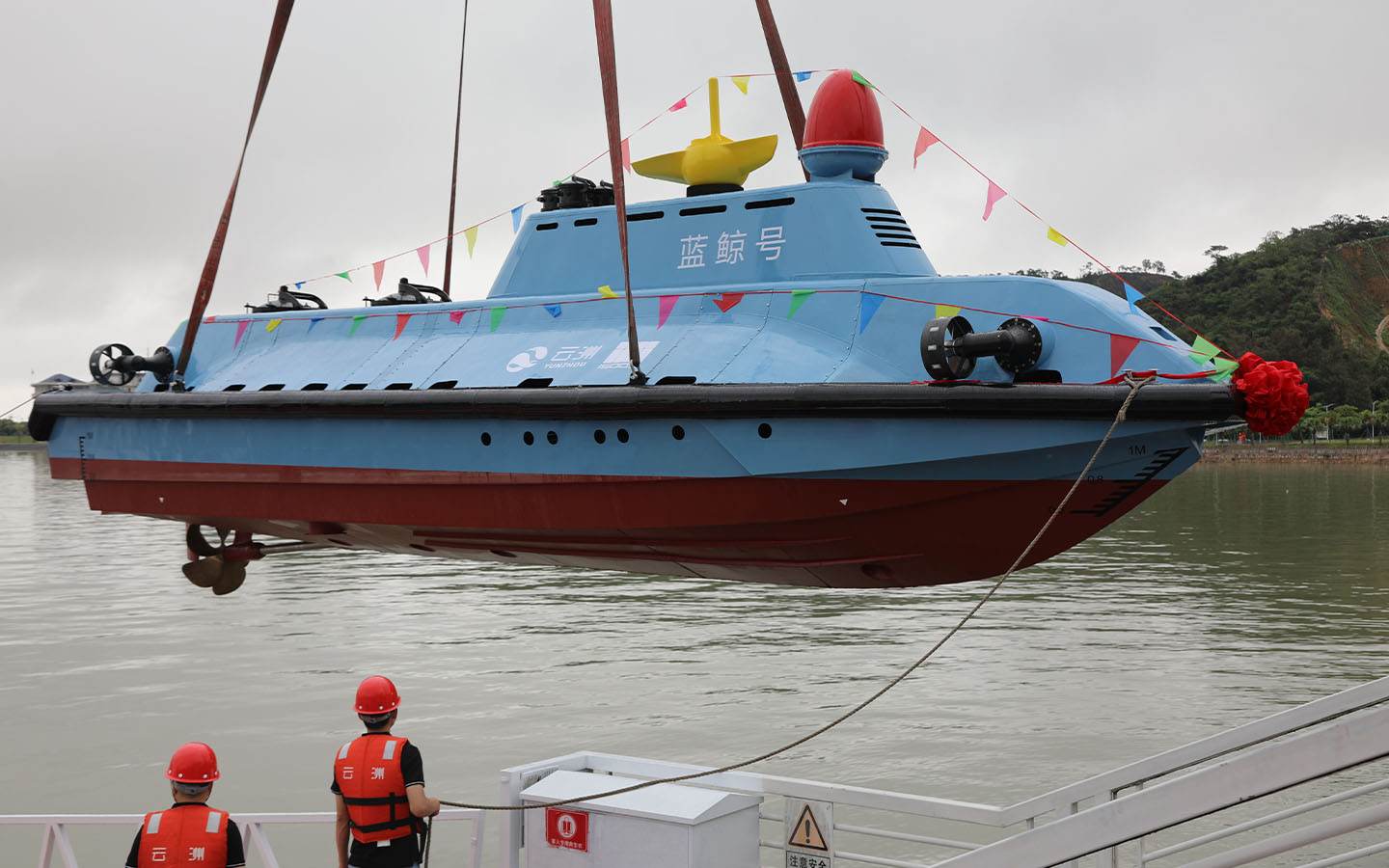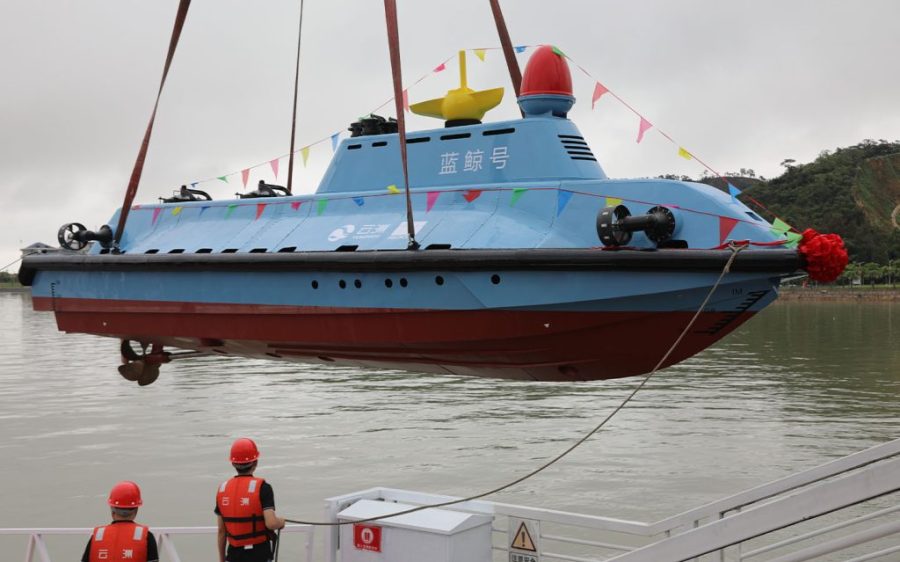A unmanned, high-speed submersible capable of diving as deep as 60 metres has been launched off the coast of Zhuhai, multiple media outlets report. Dubbed the Blue Whale, the 11 metre-long vessel is operated by artificial intelligence (AI) and is designed to work above and below the sea’s surface.
The launch, which took place on 28 April, was not the Blue Whale’s operational debut – the latter is expected to happen in 2026 – but it was hailed by the Xinhua news agency as a “significant breakthrough in China’s marine technology” and “a major step forward in the development of intelligent ocean equipment.”
The vessel is currently being put through its final stages of testing. Previous trials in the South China Sea saw it map about 3,000 square kilometres of seabed within 15 days, which is reportedly five times faster than a manned survey vessel can manage.
[See more: China’s world-first winch system can lay cables at the deepest place on earth]
The vessel can reach surface speeds of 36 knots, similar to some naval destroyers and torpedoes, and remain underwater in a suspended state for more than a month at a time. Its diving ability allows it to avoid extreme weather, like typhoons.
The Blue Whale is equipped to carry out a wide range of tasks, including meteorological research, underwater mapping, high-resolution photography, water quality sampling and inspections of underwater infrastructure like submarine cables. To support storm trackers, it can launch meteorological rockets and sensors close to the centre of typhoons to gather valuable oceanic and atmospheric data.
It’s currently being presented as a civilian tool but could pivot into dual-use applications in the future, according to Maritime Insight. Chen Dake, from the Chinese Academy of Sciences, told Xinhua that the Zhuhai launch represented a “milestone in China’s independent innovation in marine science.”






